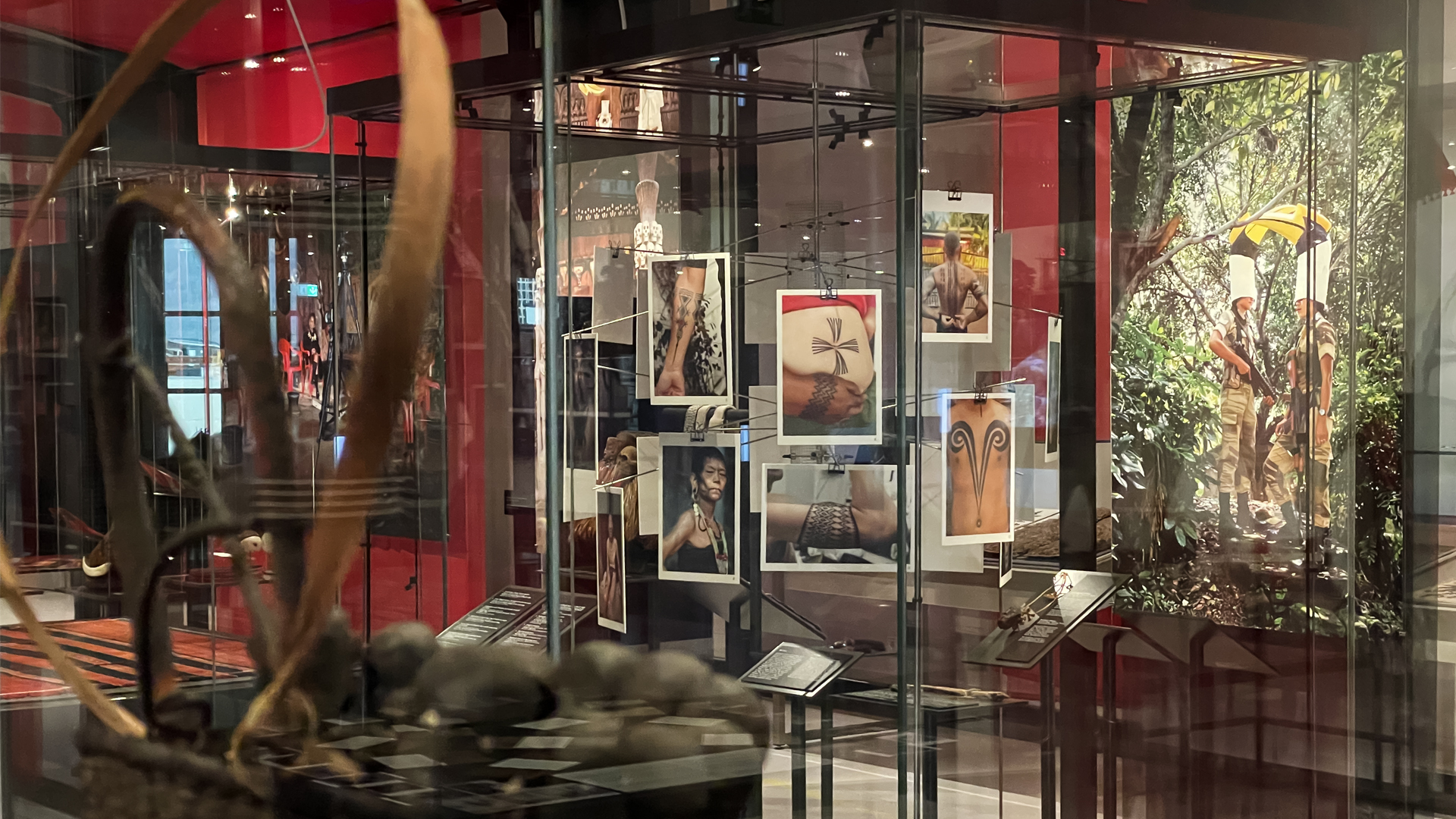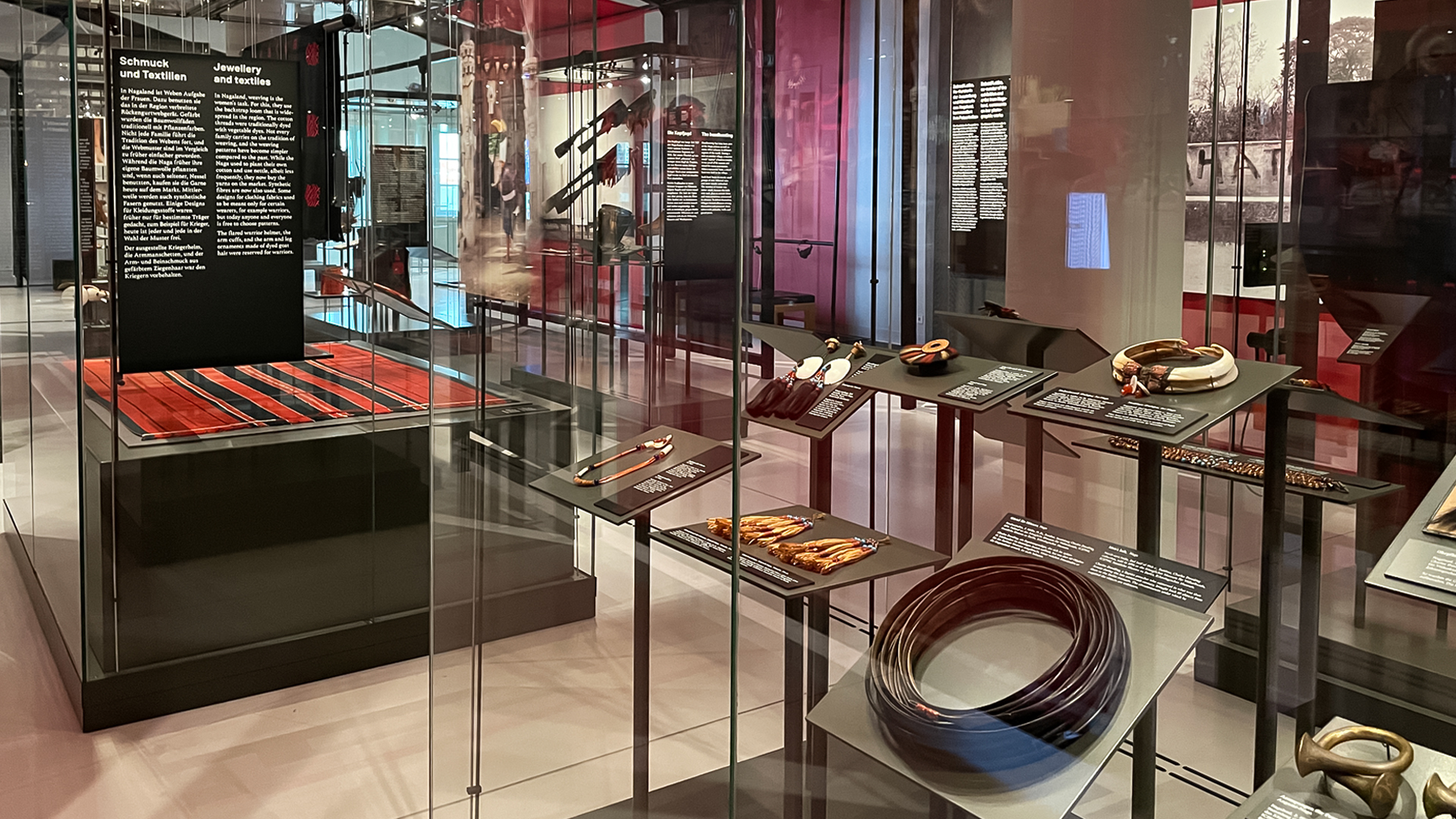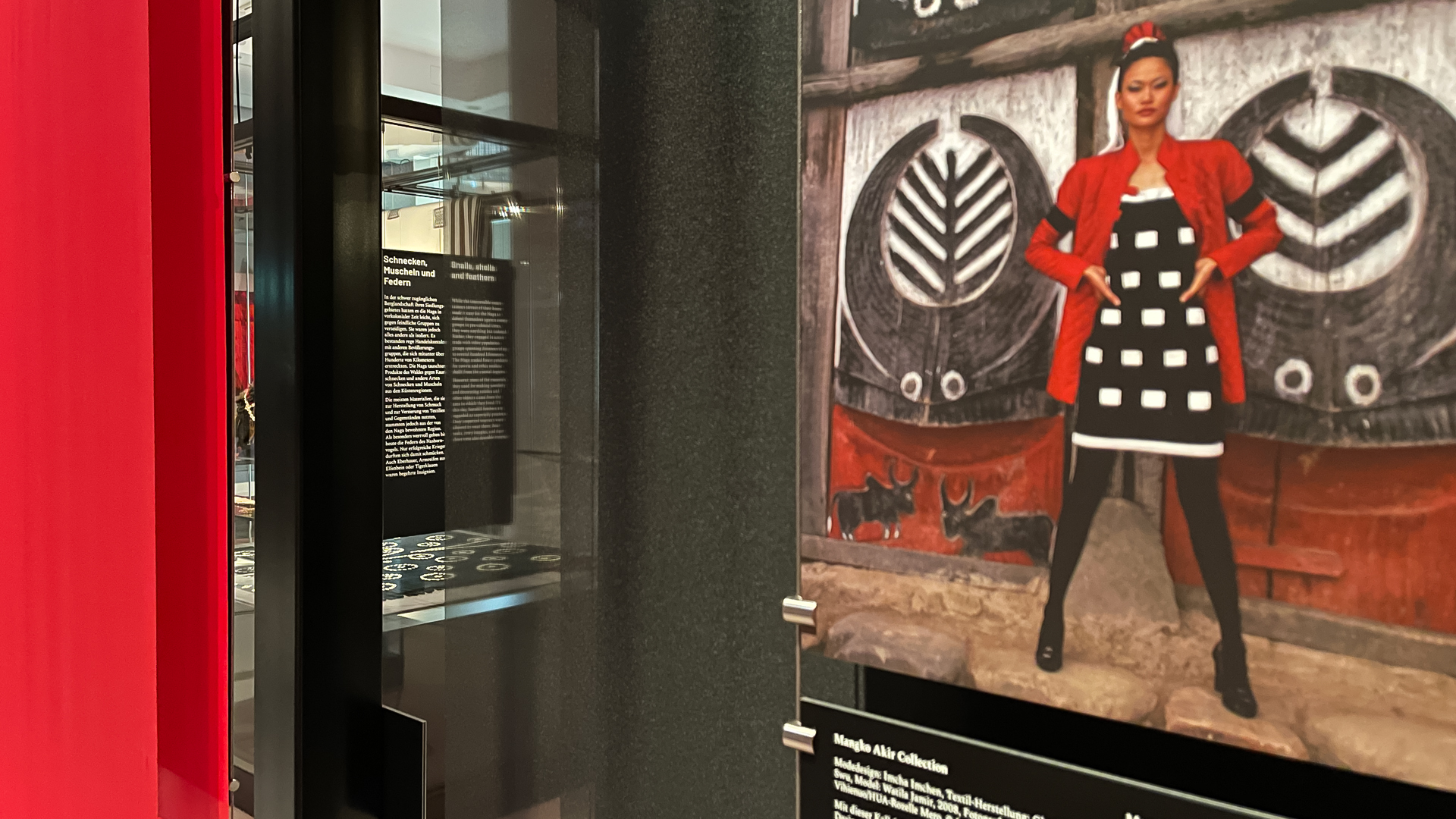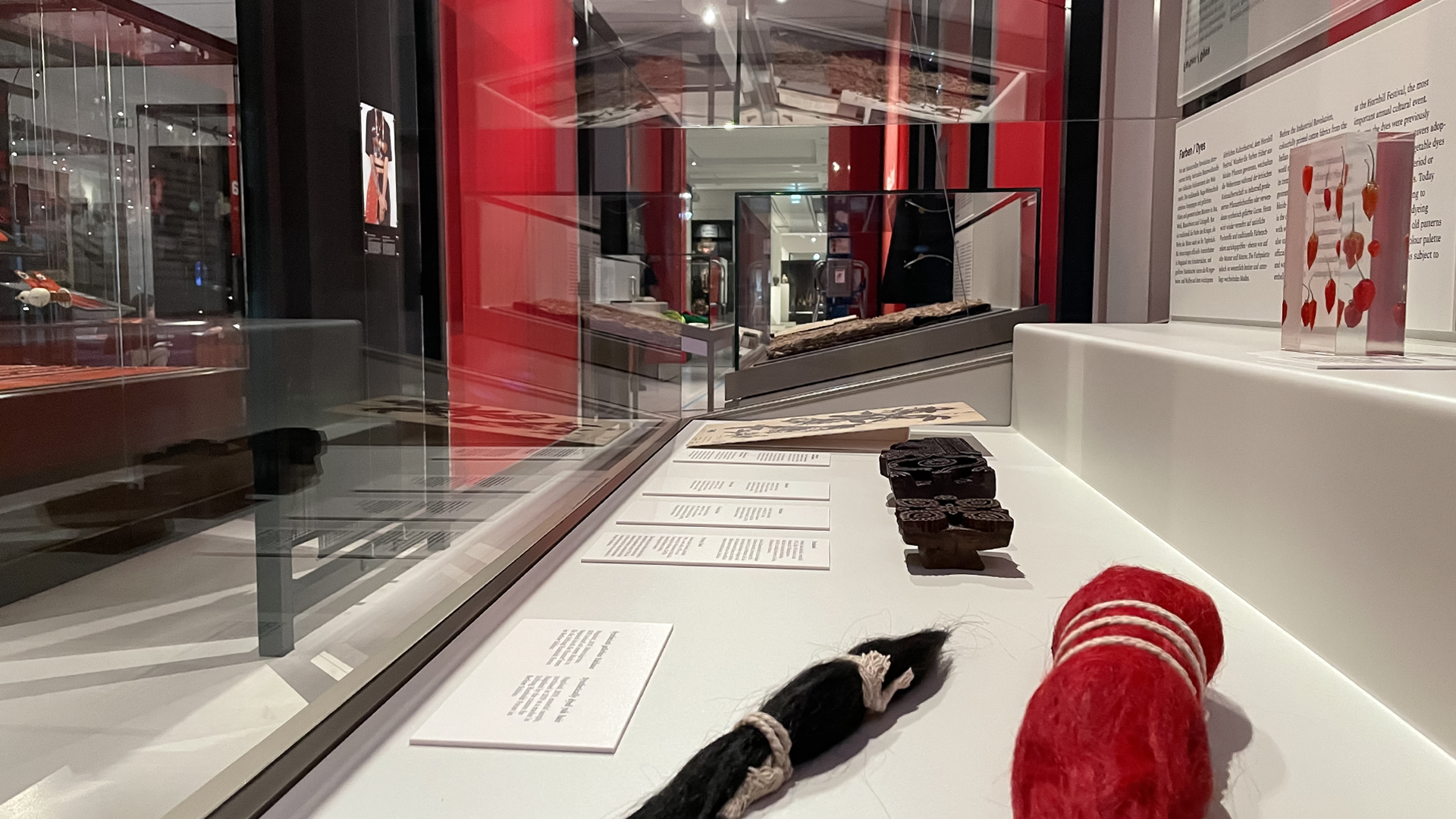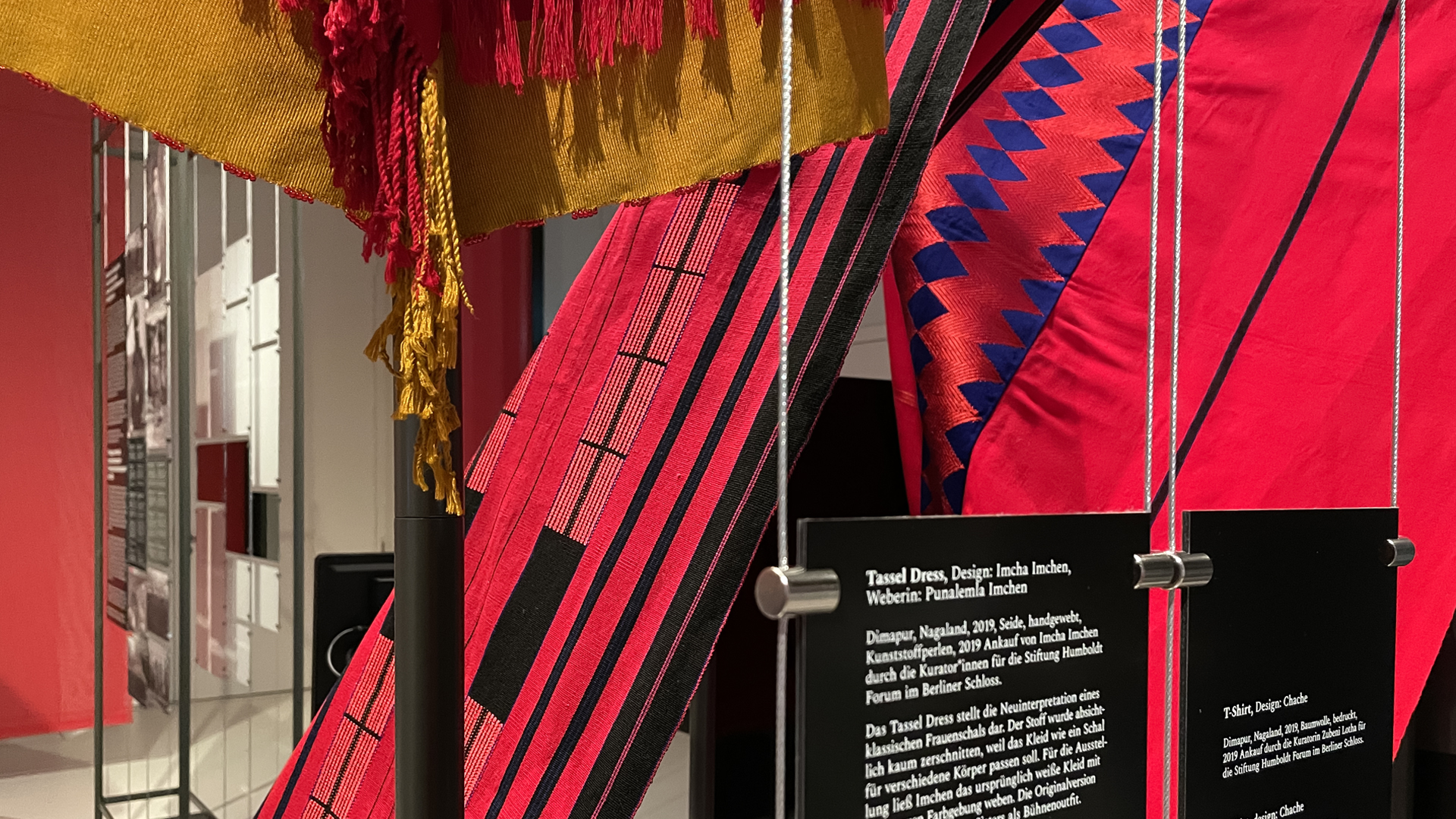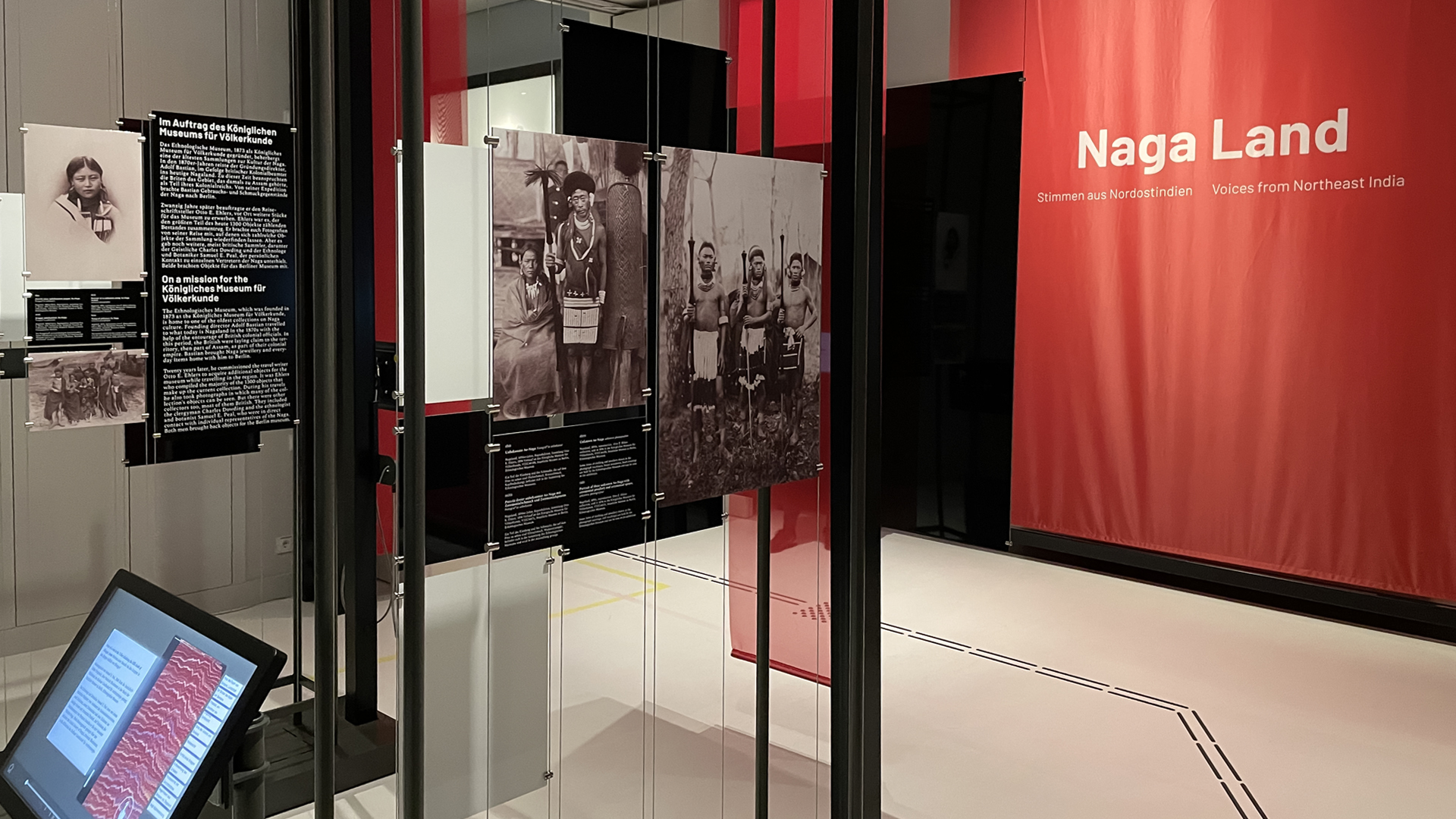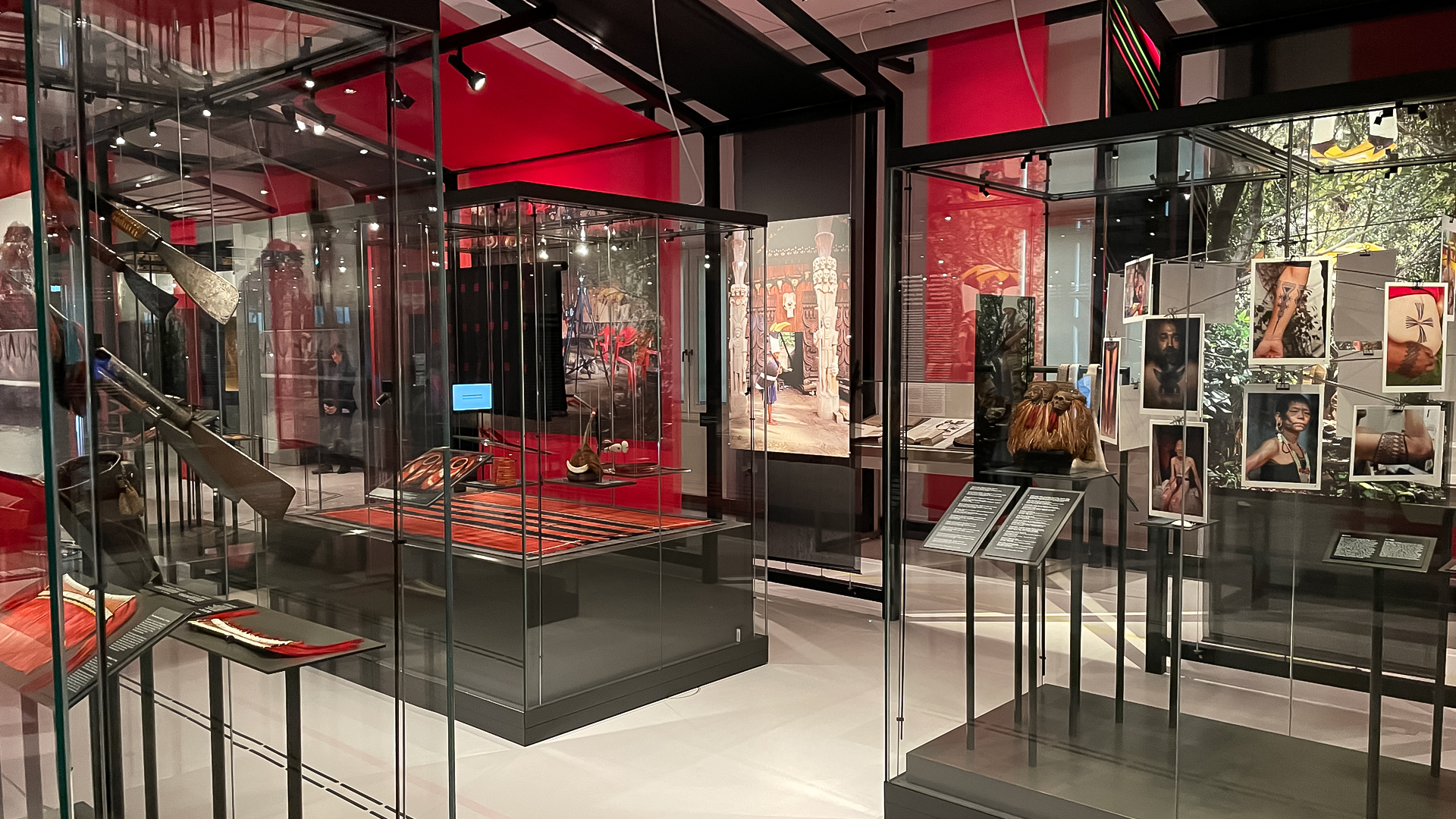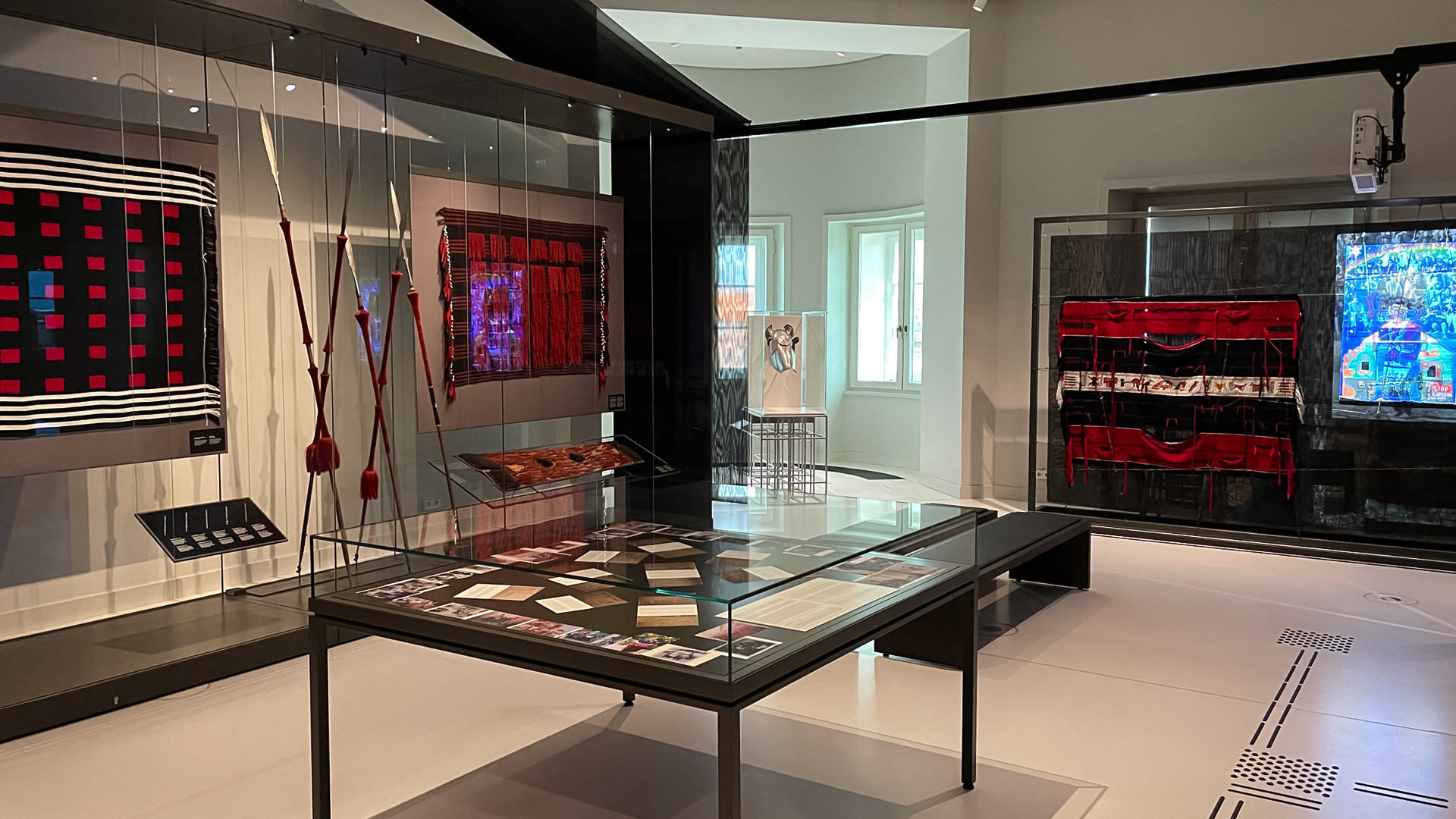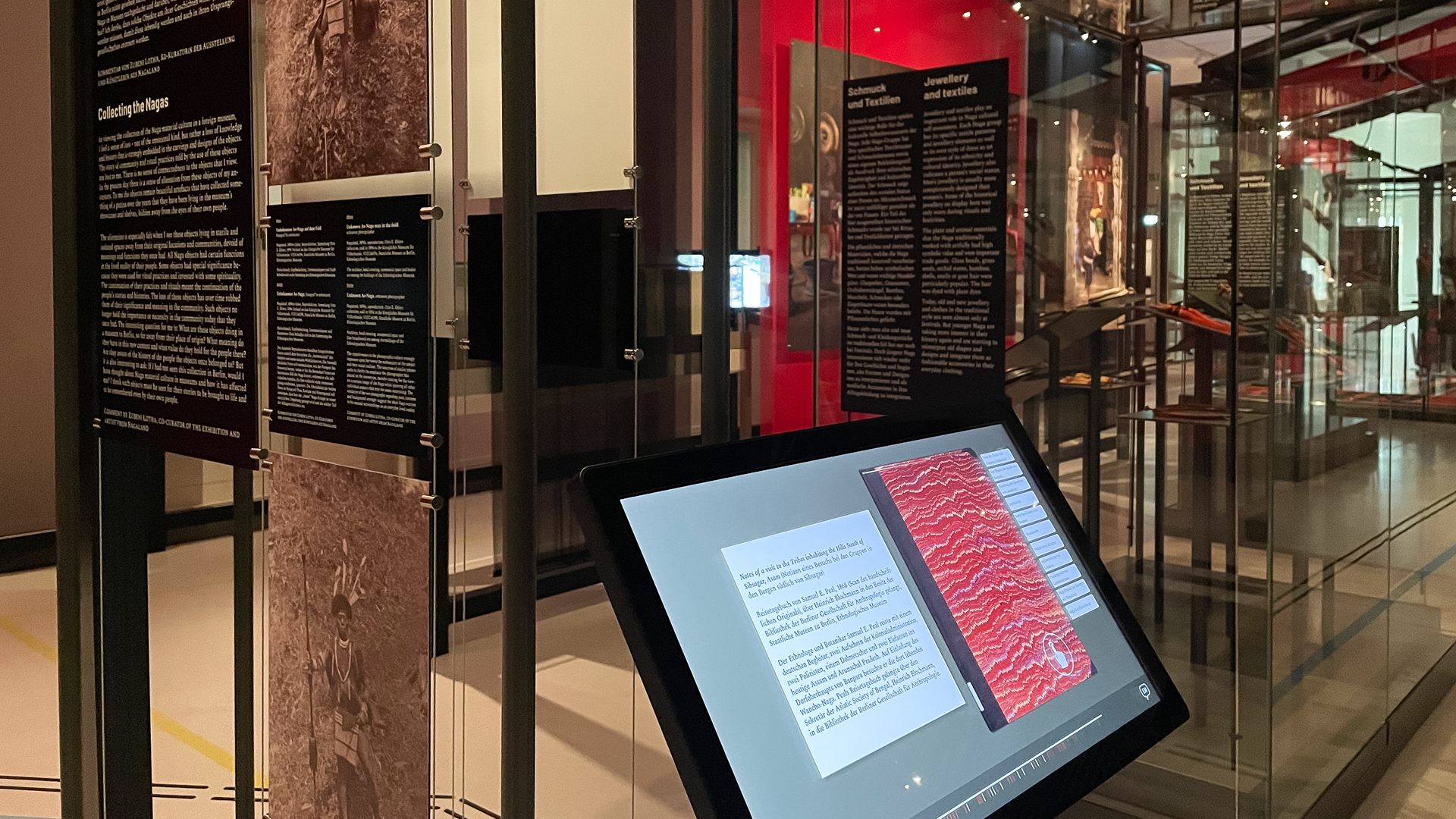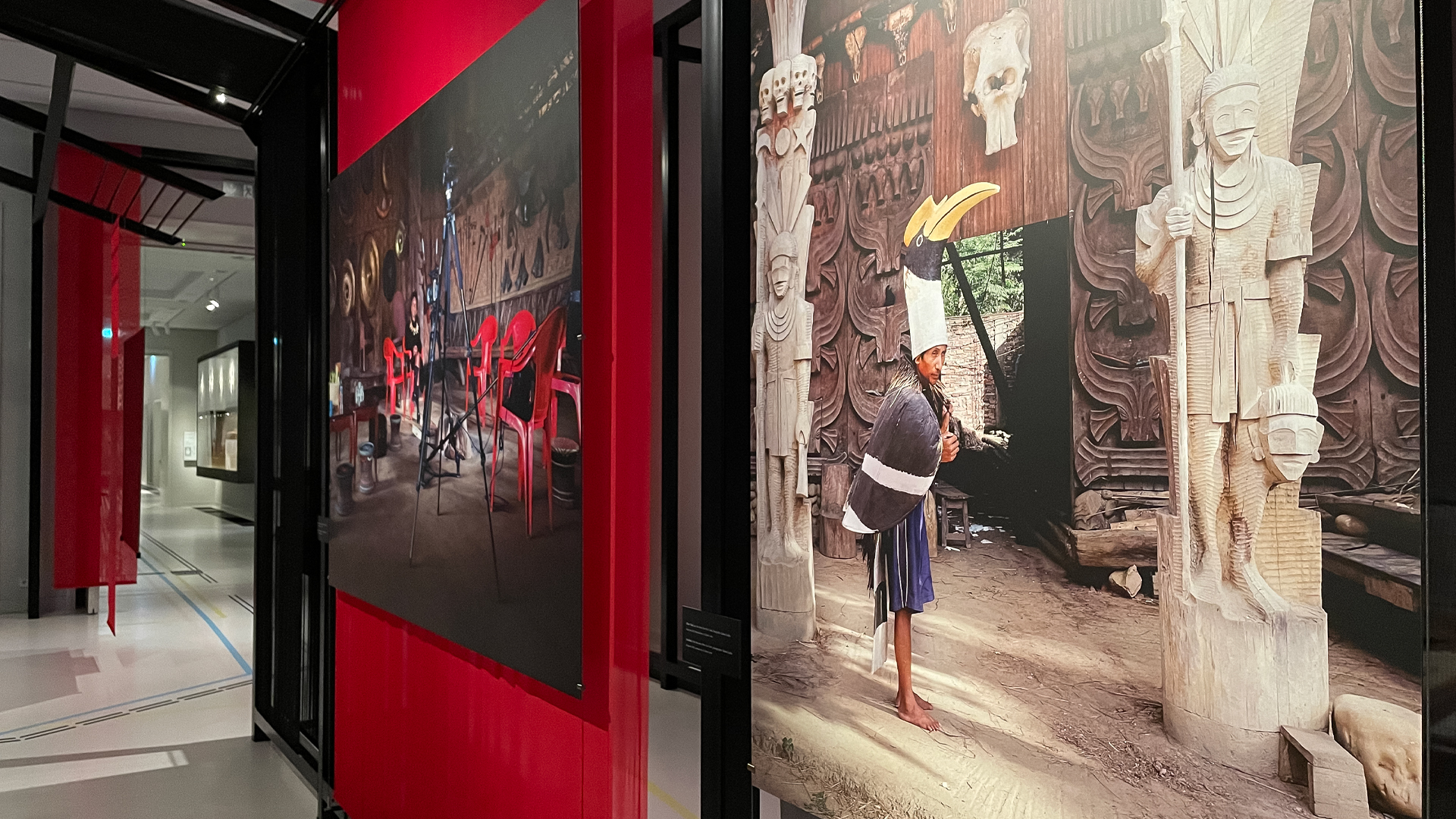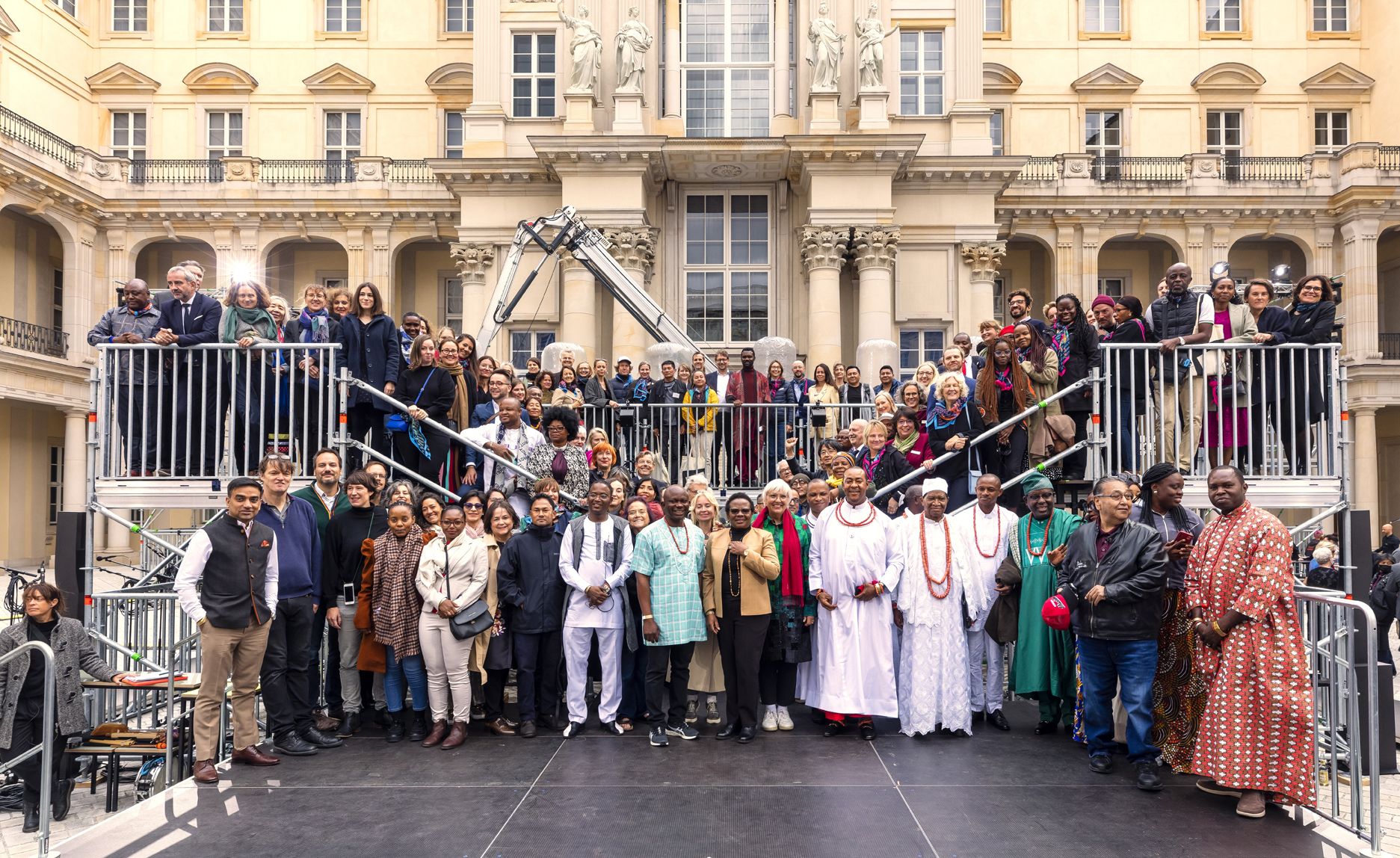Nagaland Exhibition
EXPLORE
Nagaland | Stiftung Humboldt Forum
Creating a living exhibition
In the context of ethnological exhibitions, it is still a challenge to speak not about, but with people. The temporary exhibition Nagaland – Voices from Northeast India, co-curated by Zhubeni Lota, a Naga artist, and Dr. Roland Platz, a German ethnologist, masters this challenge in a presentation that combines a wide variety of themes, eras and perspectives. As Luxoom, we conceived and implemented the design and media production of this exhibition.
In terms of design, the exhibition deliberately sets itself apart from the permanent exhibition of the ethnological collections. It uses design that aims to create openness and transparency. Viewpoints combine historical objects with contemporary photography. Semi-transparent materials play with the visibility and identity of objects. Temporary suspensions show how changeable the displayed topics are. The result is a space wherein whose layering visitors constantly find new perspectives. The inevitable, aesthetic elevation of the objects is thereby contained by their surroundings, placed in a living social and cultural context.
Creating relationships, establishing perspectives
The design actively creates space for context. It invites visitors, for example, to overlay the historical-colonial image with the self-image of the Naga. It encourages them to bring together their own culture and experience with that of the Naga. To trace how traditions are reflected in everyday life here and there today. The exhibition does not follow any pre-formulated headlines. It offers incentives and suggestions for the visitors to draw their own conclusions, to formulate their own picture. And it expressively refuses to reduce the Naga to historical objects and colonial history.
Structuring the story space
For the visitors, the exhibition is divided into two entrance areas, which offer basic information and place historical photos, and a building structure with an adjoining open space. The structure, made of steel and semi-transparent materials, is characterized inside by object showcases, whose abundance and transparency overlap with the surroundings. On the quieter side of the structure is a media track that invites visitors to linger and observe. In contrast, the Botanical track addresses the materials and skills used in the objects. The open space, which is accessed by various visitor paths, brings several contemporary elements to the visitor experience: a collection of private photographs paired with newspaper clippings and an art installation that address the Naga political-social situation. An open display case on fashion design and popular culture fits into this contemporary framework, bringing the aesthetics of the historical objects into the present and linking to the question of Naga identity.
A STEP FORWARD
The Humboldt Forum provides the setting for this exhibition. With the curators involved, however, the exhibition also has clear contacts and senders who have entered into an exciting and open-ended collaboration.
Nagaland – Voices from Northeast India presents this as transparently as possible. This was also acknowledged at the opening by the Minister of State for Culture, Claudia Roth, who took up this dialogue.

